DeFi
Ethereum’s lowered yield might signal a paradigmatic shift in the ecosystem
Published
3 months agoon
By
admin
Disclosure: The views and opinions expressed here belong solely to the author and do not represent the views and opinions of crypto.news’ editorial.
In mid-August 2024, Ethereum (ETH) gas fees dipped to 0.6 gwei—a record low since 2019. While some see this as a concerning drop, it is symptomatic of broader, healthier shifts within the ecosystem.
Lower gas fees reflect decreased mainnet transaction volume, which has, in turn, led to reduced staking yields for validators. Simultaneously, the slow adoption of Ethereum exchange-traded funds in the US adds to the market’s uncertainty. These recent events have prompted some to question Ethereum’s viability and long-term future. But rather than signaling a crisis, these developments point to a new chapter in Ethereum’s evolution—one that marks a transition to a more mature and sustainable ecosystem.
The reduced yields should not be viewed as a sign of diminished activity or liquidity but as a result of Ethereum’s success in scaling and distributing its load across layer-2 solutions. This shift, alongside new investment vehicles like spot ETH ETFs, is creating a more efficient and accessible market, bringing long-term benefits to Ethereum and decentralized finance as a whole.
Ethereum’s paradoxical growth
Ethereum is currently experiencing what can best be described as paradoxical growth. On the one hand, its mainnet is seeing reduced transaction activity and lower yields. On the other hand, L2 solutions—designed to reduce transaction congestion—are flourishing. Daily transactions across L2 ecosystems surged to an all-time high of 12.42 million in mid-August, coinciding with the lowest gas fees seen on the Ethereum mainnet in years. These dynamics reveal that rather than a slowdown in the ecosystem, Ethereum is shifting its activity to more scalable, efficient layers.
The lowered staking yields for validators, which many are concerned about, are a natural consequence of this migration of activity from the mainnet to L2s. Over time, Ethereum’s mainnet may evolve into a settlement layer reserved for high-value transactions, allowing the bulk of lower-value activity to be handled by L2s. This isn’t a sign of decline but of a maturing market capable of meeting the demands of a growing user base while optimizing costs and efficiency.
Instead of focusing narrowly on the mainnet’s yield, stakeholders would do well to consider Ethereum’s ecosystem as a whole. Attracting more users to the protocol, enhancing accessibility, and rolling out initiatives like incentivized airdrops and points systems could help Ethereum further solidify its position as the go-to platform for decentralized applications and DeFi innovations.
The expanding influence of DeFi
Ethereum’s role as the foundational layer of DeFi continues to shape the broader blockchain space. Despite current concerns, Ethereum’s growth remains a powerful driver of innovation, and this evolution is crucial for the future of decentralized finance.
On the protocol level, Ethereum’s continued development and expansion create a more competitive and accessible network for users and developers alike. As Ethereum scales, its capability to support new dApps and financial products increases, further contributing to DeFi’s success. This, in turn, drives network effects, where increased participation enhances security, utility, and, ultimately, adoption.
Ethereum’s influence is also spreading to traditional finance, most notably through the introduction of spot ETH ETFs, which provide a more familiar and regulated entry point for institutional and retail investors alike. These ETFs lower the entry barrier for those unfamiliar with blockchain technology but eager to invest in the space. By offering a regulated framework and a product perceived as safer than direct token purchases, spot ETH ETFs are attracting traditional investors to the Ethereum ecosystem. This not only expands Ethereum’s reach but also positions ETH as more than just a tech-driven asset—transforming it into a recognized store of value.
As this trend continues, we can expect further integration between Ethereum and real-world assets, enhancing the network’s utility and long-term potential.
Supporting ecosystem transitions
As Ethereum navigates this paradigm shift, it’s important to recognize that these changes are a natural part of the ecosystem’s evolution. Lowered staking yields and gas fees are not indications of failure but reflections of Ethereum’s capacity to adapt and scale. Supporting this transition is crucial for the network’s long-term success, and this can be achieved through initiatives that prioritize user engagement and developer incentives.
For instance, platforms like Base—an L2 solution—handled over 109 million transactions in the past 30 days compared to Ethereum’s 33 million. This is a clear sign that L2s play a critical role in the network’s growth. However, acknowledging this shift isn’t enough; the ecosystem must prioritize collaboration among DeFi protocols to build dApps that maximize Ethereum’s potential. This is the only way for Ethereum to achieve its actual goal of serving the masses with decentralized technology.
A new dawn for Ethereum
The Ethereum mainnet’s lower yields and gas fees may appear to signal a slowdown, but they are, in fact, signs of Ethereum’s growing scalability and efficiency. As L2 networks take on more transaction activity and new financial products like spot ETH ETFs open the door for traditional investors, Ethereum is evolving into a more robust and versatile platform.
The ebbs and flows of market dynamics—like the recent yield reductions—are part of a larger shift that strengthens Ethereum’s role as the backbone of DeFi. The future of Ethereum lies in its ability to scale, integrate real-world assets, and foster a thriving community across its ecosystem. Far from being a calamity, the lower yields signal a new dawn in which Ethereum continues to lead the way in decentralized innovation.

Danny Chong
Danny Chong is the co-founder of Tranchess, a multi-staking protocol, and co-founder of Digital Assets Association Singapore, a non-profit organization pushing the convergence of TradFi and DeFi. With over 17 years of experience in investment banks, Danny has previously held leading roles in trading, sales, and management at prominent French banks, including BNP Paribas and Société Générale for the APAC region.
Source link
You may like


Experts say these 3 altcoins will rally 3,000% soon, and XRP isn’t one of them
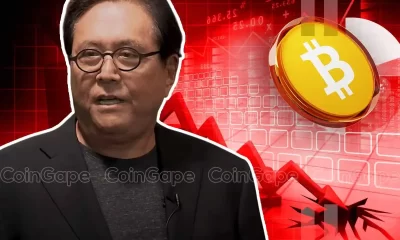

Robert Kiyosaki Hints At Economic Depression Ahead, What It Means For BTC?


BNB Steadies Above Support: Will Bullish Momentum Return?


Metaplanet makes largest Bitcoin bet, acquires nearly 620 BTC


Tron’s Justin Sun Offloads 50% ETH Holdings, Ethereum Price Crash Imminent?


Investors bet on this $0.0013 token destined to leave Cardano and Shiba Inu behind
DeFi
DeFi Protocol Usual’s Surge Catapults Hashnote’s Tokenized Treasury Over BlackRock’s BUIDL
Published
15 hours agoon
December 22, 2024By
admin
There’s been a change of guard at the rankings of the $3.4 billion tokenized Treasuries market.
Asset manager Hashnote’s USYC token zoomed over $1.2 billion in market capitalization, growing five-fold in size over the past three months, rwa.xyz data shows. It has toppled the $450 million BUIDL, issued by asset management behemoth BlackRock and tokenization firm Securitize, which was the largest product by size since April.

USYC is the token representation of the Hashnote International Short Duration Yield Fund, which, according to the company’s website, invests in reverse repo agreements on U.S. government-backed securities and Treasury bills held in custody at the Bank of New York Mellon.
Hashnote’s quick growth underscores the importance of interconnecting tokenized products with decentralized finance (DeFi) applications and presenting their tokens available as building blocks for other products — or composability, in crypto lingo — to scale and reach broader adoption. It also showcases crypto investors’ appetite for yield-generating stablecoins, which are increasingly backed by tokenized products.
USYC, for example, has greatly benefited from the rapid ascent of the budding decentralized finance (DeFi) protocol Usual and its real-world asset-backed, yield-generating stablecoin, USD0.
Usual is pursuing the market share of centralized stablecoins like Tether’s USDT and Circle’s USDC by redistributing a portion of revenues from its stablecoin’s backing assets to holders. USD0 is primarily backed by USYC currently, but the protocol aims to add more RWAs to reserves in the future. It has recently announced the addition of Ethena’s USDtb stablecoin, which is built on top of BUIDL.
“The bull market triggered a massive inflow into stablecoins, yet the core issue with the largest stablecoins remains: they lack rewards for end users and do not give access to the yield they generate,” said David Shuttleworth, partner at Anagram. “Moreover, users do not get access to the protocol’s equity by holding USDT or USDC.”
“Usual’s appeal is that it redistributes the yield along with ownership in the protocol back to users,” he added.

The protocol, and hence its USD0 stablecoin, has raked in $1.3 billion over the past few months as crypto investors chased on-chain yield opportunities. Another significant catalyst of growth was the protocol’s governance token (USUAL) airdrop and exchange listing on Wednesday. USUAL started trading on Binance on Wednesday, and vastly outperformed the shaky broader crypto market, appreciating some 50% since then, per CoinGecko data.
BlackRock’s BUIDL also enjoyed rapid growth earlier this year, driven by DeFi platform Ondo Finance making the token the key reserve asset of its own yield-earning product, the Ondo Short-Term US Government Treasuries (OUSG) token.
Source link
Aave
AAVE Dominates DeFi Lending – Metrics Reveal 45% Market Share
Published
1 week agoon
December 15, 2024By
admin
Aave (AAVE), the leading decentralized finance (DeFi) lending protocol, has captured the spotlight with an extraordinary surge of over 200% since November 5. Outperforming the broader market, AAVE has reached its highest levels since 2021, marking a remarkable recovery and reaffirming its dominance in the DeFi ecosystem.
Related Reading
Key metrics from IntoTheBlock underscore AAVE’s unmatched position in the lending sector. With an impressive 45% market share, it remains the top choice for users seeking decentralized borrowing and lending solutions.
With AAVE trading at multi-year highs and on-chain data suggesting robust activity, the altcoin’s trajectory remains a focal point for investors and analysts alike. The question is whether the price can sustain this momentum and reach new all-time highs in the coming months.
AAVE Keeps Growing
Aave (AAVE) has shown consistent growth over the past year, solidifying its position as a market leader in the DeFi lending sector. Known for its innovative approach to creating non-custodial liquidity markets, Aave enables users to earn interest on supplied and borrowed assets at variable interest rates. This approach has made Aave a go-to protocol for decentralized borrowing and lending.
For years, Aave has been at the forefront of DeFi innovation, continually enhancing its platform and user experience. Its success is evident in its market dominance. Metrics from IntoTheBlock highlight Aave’s unrivaled leadership, boasting an impressive 45% market share in the DeFi lending space.
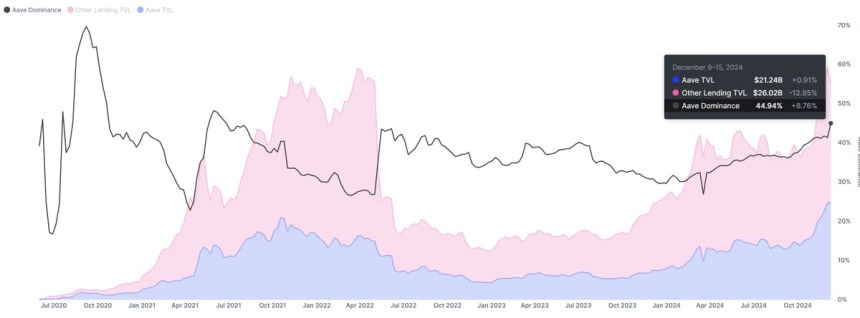
This dominance is further emphasized by Aave’s staggering total value locked (TVL), which stands at $21.2 billion—almost equal to the combined TVL of all other lending protocols.
Related Reading
Such figures underline Aave’s critical role in the DeFi ecosystem. Its established presence and robust infrastructure position it as a key player in the event of a broader DeFi resurgence. Should the sector heat up in the coming weeks, Aave is likely to attract significant attention from investors and traders.
Price Targets Fresh Supply Levels
Aave (AAVE) is currently trading at $366, following a surge to a multi-year high of $396 just hours ago. The altcoin continues its upward momentum as it approaches the critical $420 resistance level, a threshold last held in September 2021. This mark is seen as a pivotal area for AAVE’s next phase of price action, with many analysts expecting a significant reaction once tested.
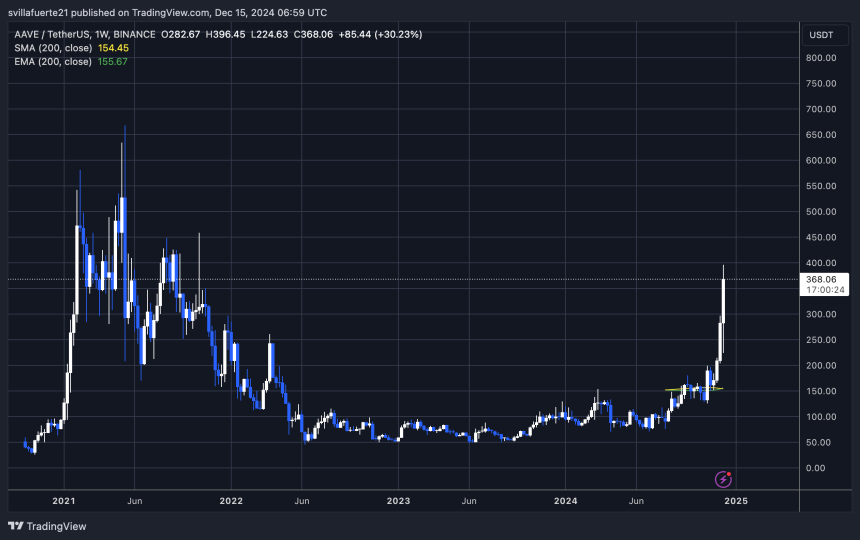
If AAVE manages to hold its current levels and sustain the bullish momentum, the next logical target would be the $420 resistance zone. Breaking above this level could signal a continuation of its multi-month rally, setting the stage for even higher price targets as investor confidence builds.
On the downside, failure to maintain support above the $320–$340 range could lead to a broader correction. A move below this zone might push the price lower, erasing some of its recent gains and dampening bullish sentiment in the short term.
Related Reading
AAVE remains in a strong position for now, but traders are closely monitoring its price action near these key levels. Whether it can sustain its upward trajectory or faces a pullback will depend on its ability to break and hold above significant resistance zones.
Featured image from Dall-E, chart from TradingView
Source link
Blockchain
Dogeson, Shiro Neko, Orbit among Saturday’s largest gainers
Published
1 week agoon
December 15, 2024By
admin
Three coins have risen to the top of the leaderboard: The Dogeson, a playful nod to Elon Musk, his son and Dogecoin; Shiro Neko, a cat-themed token tied to gaming and NFTs; and Orbit, a space-inspired coin.
These tokens topped the gainers’ charts on Saturday night. Here’s a closer look at each.
Dogeson
The Dogeson (DOGESON), a Doge-inspired coin named after an edited photo Elon Musk posted of himself and his son, X Æ A-12, is up more than 90% at last check Saturday.
With a market cap reaching $146.6 million, the token is built on the Ethereum blockchain and has garnered attention for its narrative of a “space-bound Doge” — meshing humor with a decentralized finance (DeFi) theme.
Details about The Dogeson’s founding team or developers were not immediately clear.
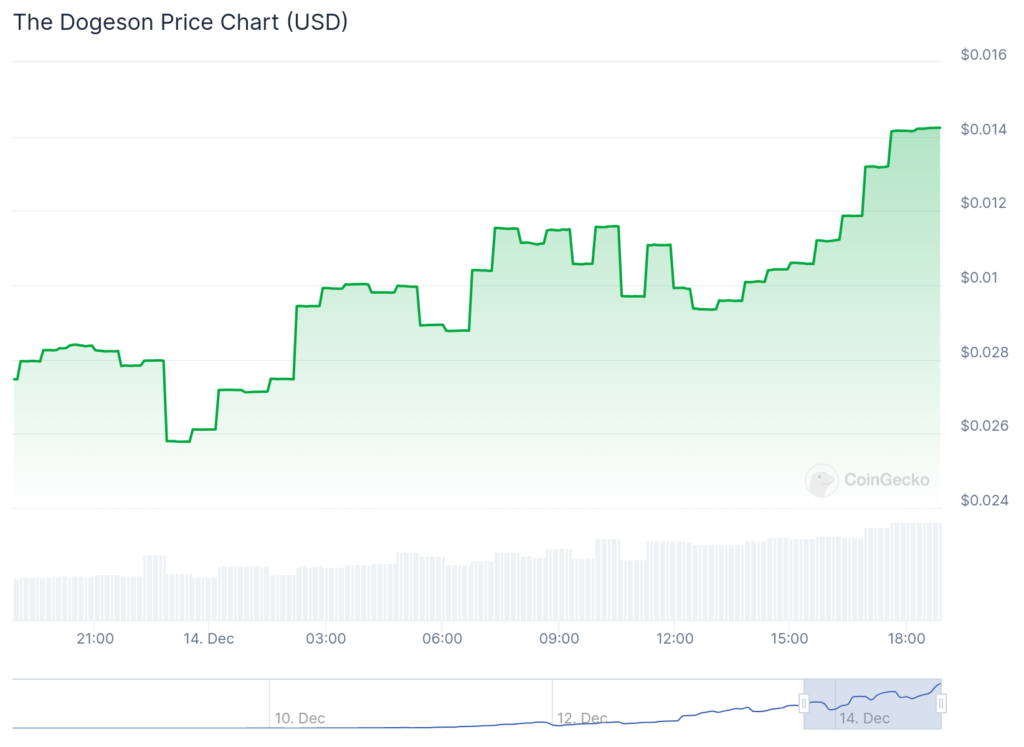
Shiro Neko
Shiro Neko (SHIRO) is a new cryptocurrency project that blends blockchain technology with play-to-earn (P2E) gaming.
Its ecosystem is built around a native token that can be used for in-game purchases, staking, and governance.
It’s up over 83% at last check, with a market cap of about $441 million.
The project emphasizes a community-driven approach, immersive gaming experiences, and collectible in-game assets, including NFTs. It aims to attract both gamers and crypto enthusiasts through competitive challenges and real-world rewards
Shiro Neko is also building on Shibarium, the Layer 2 blockchain for the Shiba Inu ecosystem, further anchoring itself in a popular crypto community. Additionally, the project is venturing into entertainment by launching an animated series featuring “Shiro” the cat.
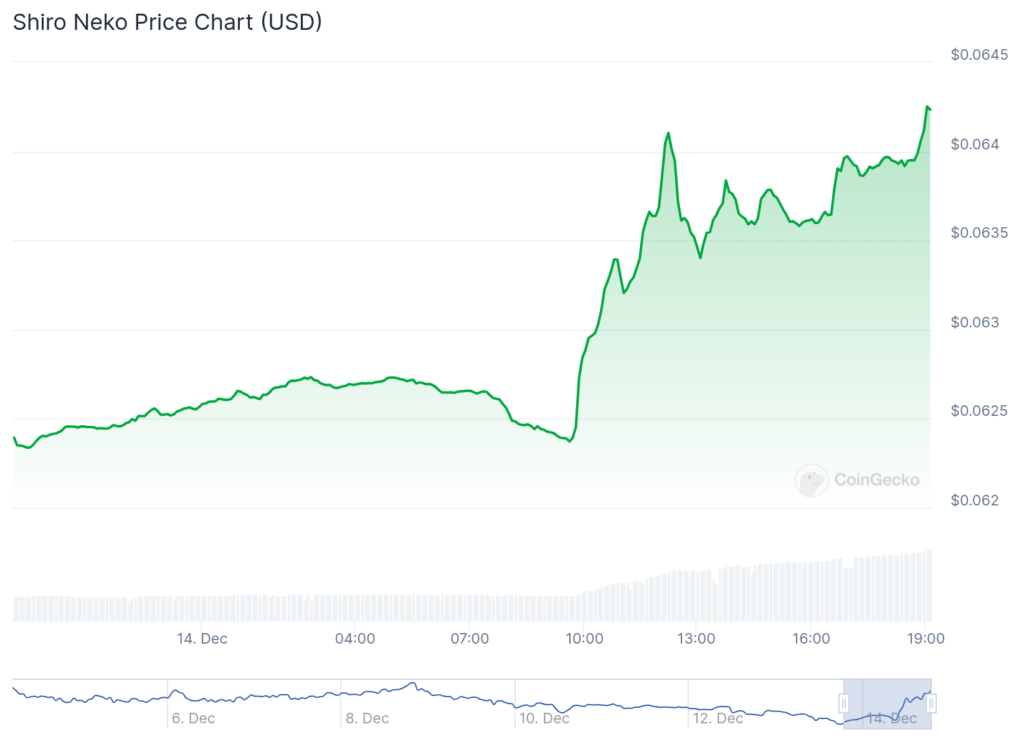
The token recently had its Initial Exchange Offering (IEO) on Gate.io, with 88 billion tokens available for sale, representing 0.01% of its total supply of 1 quadrillion tokens.
This reflects a focus on early adoption and community-building in the crypto-gaming landscape.
Orbit
Orbit (ORBIT) was up 77.6% at last check Saturday, with a market cap of roughly $44 million.
Built on the Blast Chain, the native utility token of the Orbit Protocol serves multiple purposes including facilitating governance, incentivizing participants, and enabling staking for rewards.
The protocol also boasts a Total Value Locked (TVL) of over $6.4 million and a fixed total supply of 100 million.
As of now, ORBIT’s market performance shows significant price fluctuations, with a 24-hour range of $0.02543 and $0.06379.
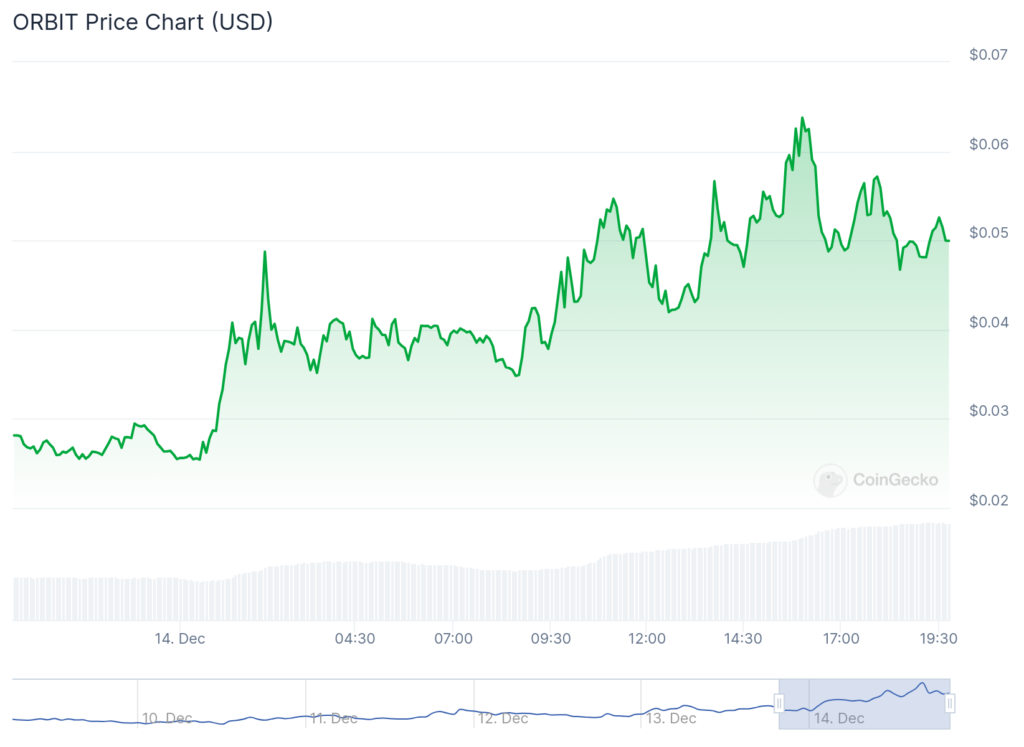
Source link

Experts say these 3 altcoins will rally 3,000% soon, and XRP isn’t one of them

Robert Kiyosaki Hints At Economic Depression Ahead, What It Means For BTC?

BNB Steadies Above Support: Will Bullish Momentum Return?

Metaplanet makes largest Bitcoin bet, acquires nearly 620 BTC

Tron’s Justin Sun Offloads 50% ETH Holdings, Ethereum Price Crash Imminent?

Investors bet on this $0.0013 token destined to leave Cardano and Shiba Inu behind

End of Altcoin Season? Glassnode Co-Founders Warn Alts in Danger of Lagging Behind After Last Week’s Correction

Can Pi Network Price Triple Before 2024 Ends?

XRP’s $5, $10 goals are trending, but this altcoin with 7,400% potential takes the spotlight

CryptoQuant Hails Binance Reserve Amid High Leverage Trading

Trump Picks Bo Hines to Lead Presidential Crypto Council

The introduction of Hydra could see Cardano surpass Ethereum with 100,000 TPS

Top 4 Altcoins to Hold Before 2025 Alt Season

DeFi Protocol Usual’s Surge Catapults Hashnote’s Tokenized Treasury Over BlackRock’s BUIDL

DOGE & SHIB holders embrace Lightchain AI for its growth and unique sports-crypto vision
182267361726451435

Why Did Trump Change His Mind on Bitcoin?

Top Crypto News Headlines of The Week

New U.S. president must bring clarity to crypto regulation, analyst says

Will XRP Price Defend $0.5 Support If SEC Decides to Appeal?

Bitcoin Open-Source Development Takes The Stage In Nashville

Ethereum, Solana touch key levels as Bitcoin spikes

Bitcoin 20% Surge In 3 Weeks Teases Record-Breaking Potential

Ethereum Crash A Buying Opportunity? This Whale Thinks So

Shiba Inu Price Slips 4% as 3500% Burn Rate Surge Fails to Halt Correction

Washington financial watchdog warns of scam involving fake crypto ‘professors’

‘Hamster Kombat’ Airdrop Delayed as Pre-Market Trading for Telegram Game Expands

Citigroup Executive Steps Down To Explore Crypto
Mostbet Güvenilir Mi – Casino Bonus 2024

NoOnes Bitcoin Philosophy: Everyone Eats
Trending

 3 months ago
3 months ago182267361726451435

 Donald Trump5 months ago
Donald Trump5 months agoWhy Did Trump Change His Mind on Bitcoin?

 24/7 Cryptocurrency News4 months ago
24/7 Cryptocurrency News4 months agoTop Crypto News Headlines of The Week

 News4 months ago
News4 months agoNew U.S. president must bring clarity to crypto regulation, analyst says

 Price analysis4 months ago
Price analysis4 months agoWill XRP Price Defend $0.5 Support If SEC Decides to Appeal?

 Opinion5 months ago
Opinion5 months agoBitcoin Open-Source Development Takes The Stage In Nashville

 Bitcoin5 months ago
Bitcoin5 months agoEthereum, Solana touch key levels as Bitcoin spikes

 Bitcoin5 months ago
Bitcoin5 months agoBitcoin 20% Surge In 3 Weeks Teases Record-Breaking Potential


